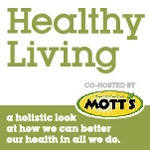
Children less than five years old are at greatest risk for choking injuries. Kids in this age range love to explore and put everything in their mouth. Because of this, toys and items around the house – in addition to food – can be a choking hazard.
Whether your new little one is starting to crawl or starting a new food, or your toddler is running around at a birthday party, here are some tips for keeping your little one safe while still having fun!
Food Safety
As a pediatrician and mom, safety for children is always on my mind. Many foods are now introduced at an earlier age (less than a year) and most recently, a new study showed some evidence that peanut butter introduced earlier may actually decrease allergies. Please speak with you doctor about introducing foods, especially if there is a family history of food allergies. That said, and because food is the most common cause of non-fatal choking in young children, it is so important for parents and caregivers to know the most common choking hazards and prevention tips.
Babies start with finger foods around the time they can sit up without support and can bring their hands to their mouths. Your baby will be so excited to start learning to feed himself! However, because he doesn’t chew well yet, you want to always give your baby soft foods, mashed or cut into small, pea-sized pieces. Most fruits and vegetables should be cooked to ensure they are soft.
Precautions to Take with Feeding
- Always watch your child when she is eating and drinking. If you are driving, please don’t let your child eat in the car.
- Make sure children stay seated when eating. Don’t let them run or walk or lay down while eating.
- Be careful with peanut butter. It should be spread very thinly on the item you are eating it with, because a big thick portion can be a choking hazard.
- Food items to avoid, as they are potential choking hazards, include: popcorn, whole grapes, peanuts, hard candies or cough drops, hot dogs, gum, big pieces of meat, raw veggies, ice cubes, seeds, marshmallows.
- Be mindful of other older children giving food to a younger child.
- Don’t rush your child when eating. Encourage eating food slowly during meals and snacks.
- Children watch their parents or caregivers. Eat your food slowly and while seated (Although this may seem impossible to do as a busy mom, do the best you can!)

These are the most common choking foods, listed below. Avoid or make sure to cut these foods up into small pieces to children under the age of 4:
- Apple peels
- Marshmallows
- Bony fish
- Nuts
- Chewing gum
- Oranges
- Corn kernels
- Peanut butter
- Grapes
- Popcorn
- Hard candy
- Raisins
- Hot dogs
- Raw carrots
- Ice Raw
- Celery
Toys and Household Items Safety
When your baby is around 6 months of age, I would suggest getting down on your hands and knees to crawl around and see what your baby will be able to get his hands on. Check the floor, under your sofa, under your television stand, etc. This will give you enough time to start baby-proofing your home and eliminate the risk of small items your soon-to-be-crawling baby can get his hands on!
A good rule of thumb is to take an empty toilet paper roll, and if a toy or small object fits in it, it can be a potential choking hazard. By around 9 months of age, most babies start crawling and your baby will become the ‘little explorer’. He will also start pulling to stand, ‘cruising’ (walking holding on), picking up small objects (‘pincer grasp’) and be interested in all that’s around him. He wants to play and explore. Your child will want to put everything he finds in his mouth! Be sure you have your home child-proofed.
Small items around the house to keep away from babies and young children:
- Coins
- Buttons
- Pen caps
- Crayons
- Hair accessories (including rubber bands or hair clips)
- Rocks
- Small toys or toys with small parts. This is especially important when there is an older sibling in the home. *Toys do have age guidelines for choking hazards and I highly suggest that you make note of the age range. Please ensure you let your child play with toys that are age appropriate.
- Latex balloons (Mylar balloons are the safer option if have balloons)
- Small batteries
- Jewelry
Read Next | When Can We Take Our Newborn out to a Restaurant?
It is pretty amazing when you actually start looking around your home – how many small objects you can find, and that you probably wouldn’t think of as a hazard prior to having children. It is important to be prepared. When your child is on the go and finds small items, he can put them in his mouth very quickly.
It is a good idea for all parents and child care providers to learn these steps to take to prevent choking and know what to do in the event of choking. Take a few hours to take a class and learn the Heimlich and CPR. I, personally, also have a poster of choking/CPR instructions for children less than 1 year and children 1-8 years old in my home for anyone to reference if needed. Also, have emergency contacts identified. If your child is choking, call 911 or have someone else call.
Like what you read? JOIN the Mommybites community to get the latest on FREE online classes, parenting advice, events, childcare listings, casting calls & raffles, and our Parents With Nannies Facebook group. SIGN UP NOW!
Ali is a board certified pediatrician who practiced general pediatrics for five years in a busy private practice in Manhattan NY. She since has moved into the pharmaceutical industry and oversees and mentors many physicians globally. She enjoys sharing her knowledge and experiences as a pediatrician with other moms and dads. Ali’s outside interests include working out, acting, piano, guitar, dance and being a mom! Ali currently lives in NYC with her husband, 3 year old daughter and 1 year old son.
 * Healthy Living is section of our website co-hosted by Mott’s. Mott’s has compensated Mommybites to be a partner in this awesome Healthy Living section on our website. This partnership does not influence the content, topics or posts made on this blog. We always give our honest opinions, findings, beliefs, or experiences on all topics, products, and services.
* Healthy Living is section of our website co-hosted by Mott’s. Mott’s has compensated Mommybites to be a partner in this awesome Healthy Living section on our website. This partnership does not influence the content, topics or posts made on this blog. We always give our honest opinions, findings, beliefs, or experiences on all topics, products, and services.
The views and opinions expressed on this blog are purely the blog contributor’s. Any product claim, statistic, quote or other representation about a product or service should be verified with the manufacturer or provider. Writers may have conflicts of interest, and their opinions are their own.

Read Next | Find a Great Nanny in and around New York City



